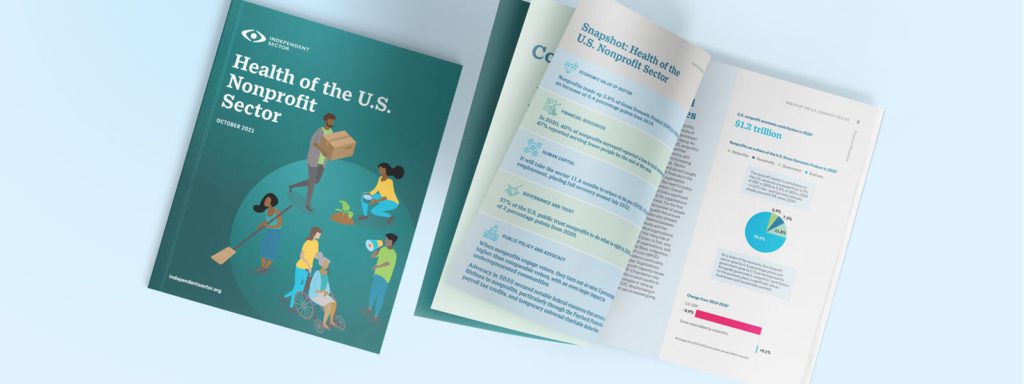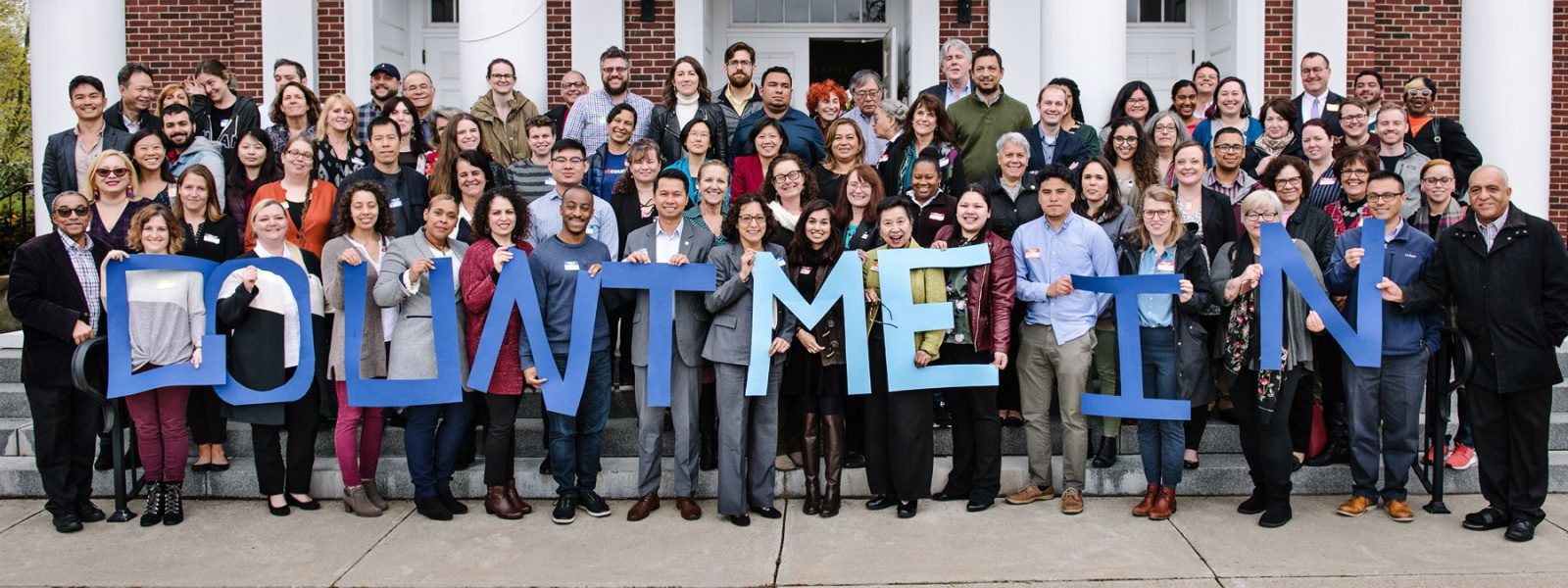As we approach the end of 2021, the nonprofit sector continues to face challenges that became even more acute in the last year: Higher demands, fewer workers and volunteers, insufficient funding, and despite it all, our ongoing mission to build healthy, equitable communities for all.
As we continue to cope with COVID-19 and everything it brings – as well as ongoing racial injustice, economic hardship impacting millions of people, and our environment at risk – the need for everyone to thrive in the United States has become sharper.
Since the pandemic began, we now have access to life-saving vaccines and deeper levels of awareness about where we must do better. Our sector of changemakers – at nonprofits, foundations, and corporate giving programs – is working relentlessly to open more doors in communities and bolster public policies that support our efforts to strengthen civil society so we all can enjoy full, productive lives.
Aiding us in this endeavor is a trove of nonprofit, government, and academic data. When used to further the common good, data enables us to engage in deeper discussions and make better collective decisions for our sector and the abundant, diverse communities we take pride in serving.
Independent Sector is pleased to release our second annual Health of the U.S. Nonprofit Sector report, a collection of original and aggregated data from multiple sources to further our collective enterprise. It includes valuable, original analyses from Independent Sector of federal data about the nonprofit sector’s economic impact and demographic composition – both of which are crucial for us to make greater progress.
This report focuses on four foundational indicators that help power the more than 1.8 million nonprofits serving people in our nation: Financial Resources, Human Capital, Governance and Trust, and Public Policy and Advocacy.
In our report, we provide insight, analysis, and recommendations. Among the highlights:
- COVID-19 brought monumental change to nonprofits, but the experience of individual organizations varied by subsector and size. For example, nonprofits serving the arts – vital for creative expression and connecting people – suffered disproportionately than other subsectors.
- The pandemic caused nonprofit budgets to shrink, especially for organizations that rely on fees-for-service. Many nonprofits used reserve funds to stay open but risked financial stability.
- The nonprofit workforce – which initially lost 1.6 million jobs last year – isn’t expected to return to pre-pandemic levels until July 2022, though community needs nationwide have grown.
- Our sector needs to work toward creating a more racially diverse and equitable workforce. We must also support women, who make up a large percentage of our workforce, and face unique burdens during the pandemic.
Our report also spotlights potential and progress, even in the face of what might seem to be insurmountable challenges:
- Nonprofits still succeeded in contributing to civil society and our economy during the pandemic and recession.
- Nonprofit gross economic value to the nation increased last year, even as the U.S. Gross Domestic Product declined.
- Though 40% of nonprofits reported serving fewer people last year, they still had significant reach – with 57% of people in the nation saying they received services from a sector organization.
- In terms of advocacy and civic engagement, nonprofits secured life-saving financial and programmatic support, protected more than 4 million nonprofit jobs, and helped increase voter participation.
- More people in the U.S. reported they’re confident nonprofits can strengthen our society.
- For the first time in years, our sector witnessed an increase of people donating – creating an opportunity to communicate our societal value to new and returning donors.
How is our sector doing?
To borrow the words of Amir Pasic, the Eugene R. Tempel Dean of Indiana University’s Lilly School of Philanthropy, on the topic of philanthropic revenues: Uneven – in impact and recovery.
We also want to hear from you. Read the report. Share your insights about the sector with us: Where do you think our sector is doing well? Where can we do better? What are we overlooking? How can we be more inclusive? And how do we know when we’ve arrived at our goals?
As comprehensive as this report is, given available information, we identify existing gaps – in overall and specific data, government release of statistics, and timeliness for our sector to respond, build, and support communities.
We also offer recommendations for improvement for each foundational category – encompassing research, practice, and policy. They, as well as others in our sector, can help bring more of us together and support our efforts for collective action and visibility to strengthen sector health and the communities we serve.
We do know the reality of when everyone is not thriving – when structural barriers remain, when policies need improvement, and when racism continues to negatively affect communities.
We have much to do to build the nation we, as changemakers, dream of becoming. What can galvanize us to greater positive action? It’s that the everlasting human qualities of resilience, kindness, and collaborating for collective progress do not fade easily. They are within our grasp every day, giving all of us hope and confidence.
The health of our nation is the sum of the richness and diversity of our members and sectors working together, elevating dignity, honoring our differences, and building for the common good. It’s alchemy – when done right.
We welcome your feedback. We also welcome working with government, academia, and new or existing partners to generate and secure better, timelier data to use in service of nonprofits, people, communities, and our nation. Our moment to thrive is still before us. Join us.
Want to learn more? Register for next week’s Upswell Summit, October 20-22, and attend a special discussion about the Health of the U.S. Nonprofit Sector report on Thursday, October 21 at 2-3:00 PM ET.



